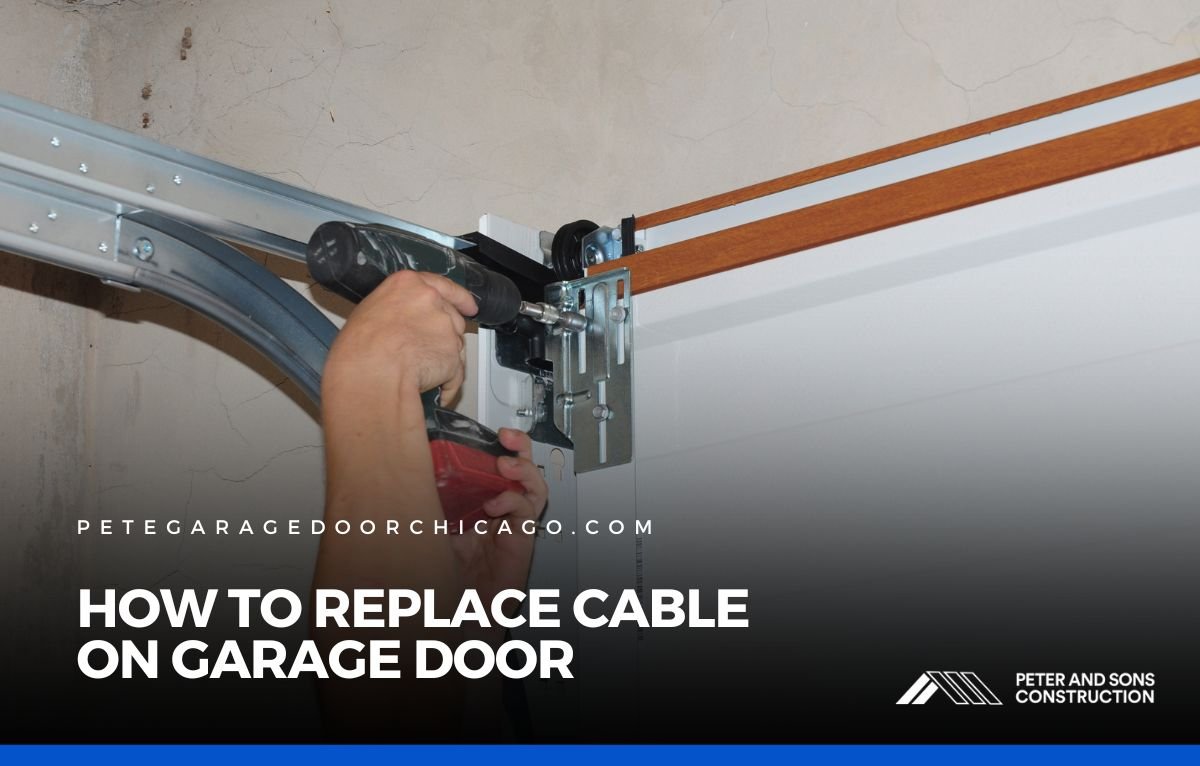How to Adjust Garage Door Cable Tension
- Editorial Team
- September 26, 2025
- 3:20 pm

A well-functioning garage door should open and close smoothly. But if your door looks uneven, gets stuck halfway, or slams shut too quickly, the problem may be cable tension.
Homeowners often want to know how to adjust garage door cable tension safely and correctly, since the cables are critical for balancing the heavy weight of the door.
Adjusting them can improve performance, but it’s also a job that requires care and the right setup.
Why Cable Tension Matters
Garage door cables work with the springs to lift and lower the door evenly. When the tension isn’t correct, one side may move faster than the other, leaving the door crooked or unbalanced.
This imbalance stresses the opener, tracks, and rollers, leading to more expensive repairs if ignored.
The good news is that learning how to adjust garage door cable tension helps prevent these issues and keeps your door running safely.
But since cables and springs are under high pressure, it’s important to understand the configurations and safety measures before making adjustments.
Signs Your Garage Door Cable Tension Is Off
It’s not always obvious when tension is the issue. Some of the most common signs include:
- The door looks crooked when halfway open.
- The door moves unevenly or jerks during operation.
- The door doesn’t stay in place when partially open.
- The cable looks slack or loose on one side when the door is open.
- The opener strains or makes unusual noises when lifting the door.
If you notice any of these symptoms, it’s likely time to adjust cable tension.
Configurations of Garage Door Systems
Not all garage doors use the same setup, and the way you adjust the cable tension depends on the system your door has.
Torsion spring systems, which are located above the door, rely on springs wound around a shaft with cables attached to drums at each end.
Adjusting cable tension in this setup typically involves winding or unwinding the torsion springs. Extension spring systems, found on either side of the door, stretch and contract as the door moves.
In this setup, the cables run over pulleys, and adjustments may involve repositioning the S-hook or pulley system.
Some doors with extension springs also use safety cables, which prevent springs from flying off if they break.
These setups require careful handling of both the main cable and the safety cable. Understanding which configuration you have is the first step in figuring out how to adjust garage door cable tension properly.
How to Adjust Garage Door Cable Tension
Although details vary by configuration, the process generally follows a sequence. First, disconnect the opener to prevent accidental activation. Then, secure the door in place with clamps or locking pliers on the tracks.
For torsion spring systems, winding bars are used to carefully relieve spring tension before adjusting the cables, while extension systems usually require opening the door fully to reduce tension. Once it’s safe, reposition the cable on the drum or pulley system and adjust the spring tension evenly.
After adjustments, test the balance by opening the door halfway and letting go carefully. A balanced door should stay in place without rising or falling. When you’re satisfied, reconnect the opener and run a full cycle to confirm smooth operation.
Why Safety Comes First
Adjusting garage door cable tension isn’t like tightening a loose screw. The cables and springs hold hundreds of pounds of pressure, and one wrong move can cause serious injury. Professionals use specific tools like winding bars and clamps that are designed for this type of work.
Using makeshift tools such as screwdrivers or pliers increases the risk of slipping. If you’re not completely confident, it’s always safer to let a trained technician handle the adjustment.
When Adjustment Isn’t Enough
Sometimes, tension problems point to bigger issues in the system.
If you find yourself constantly needing to adjust the cables, the real culprit may be worn springs that no longer hold proper tension, damaged drums or pulleys causing the cables to slip, frayed or stretched cables, or even bent tracks that interfere with movement.
In these cases, adjusting cable tension only provides a temporary fix, and a full inspection and repair may be necessary.
Maintenance Tips to Keep Cables in Check
To avoid repeated tension issues, a few simple maintenance steps can go a long way:
- Inspect cables twice a year for fraying or slack.
- Keep tracks and pulleys free of debris.
- Lubricate moving parts with garage door lubricant, not household oil.
- Schedule annual professional tune-ups to check balance and tension.
These small efforts help extend the life of your cables and springs while reducing the risk of sudden breakdowns.
A Balanced Door Is a Safe Door
Learning how to adjust garage door cable tension gives you insight into one of the most important parts of your garage door system. Correct tension keeps the door balanced, prevents uneven wear, and reduces stress on the opener.
While some minor adjustments are possible for handy homeowners, dealing with high-tension springs always carries risks. If your door continues to show signs of imbalance or slack cables, the safest move is to call a professional.
For homeowners in Niles, IL and surrounding areas, Peter and Sons Constructions provides expert cable adjustments, replacements, and full garage door maintenance services.
A properly balanced garage door doesn’t just move more smoothly; it also keeps your family and property safe.



